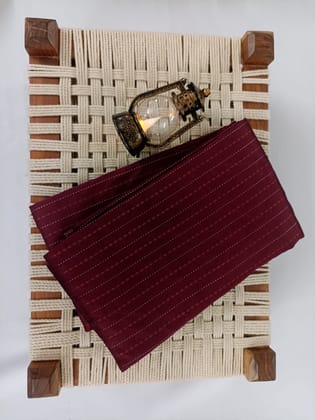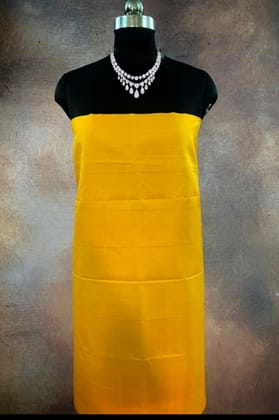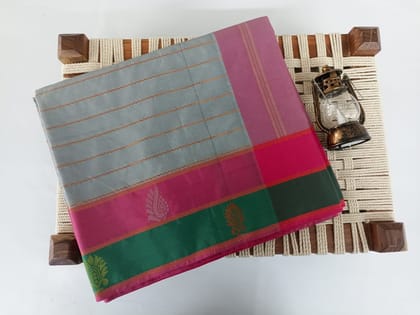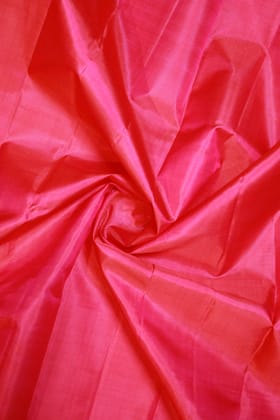Navasaarigai
Navasaarigai Handloom Raw Silk Fabric for Women Unsittched Kurtis/Salwar Shawl Material- Dark Red Color (3Meters)
MRP ₹6,795
| Country of origin | India |
|---|---|
| Lenght | 3mts |
| Brand | Navasaarigai |
| Common name | Silk fabric |
| Net Quantity | 3 meter |
| Dimensions | 33*22*5 |
| Manufacturer or packer name | Navasaarigai |
| Manufacturer or packer address | Thiruvannamalai |
| Manufacturing Date | 07/2023 |
| contact details consumer care | [email protected] |
Fabric Colour: Plain Dark Red Colour
Silk handloom fabrics are textiles made from silk fibers using traditional handloom weaving techniques. Handloom weaving is a labor-intensive and skillful method where the weaver operates the loom manually to create intricate patterns and designs. This process often results in unique and high-quality fabrics that showcase the natural beauty of silk.
Here are some key characteristics and features of silk handloom fabrics:
Material:
- Silk Fiber: Silk is a natural protein fiber produced by silkworms. It is known for its luxurious feel, sheen, and smooth texture.
Weaving Technique:
- Handloom Weaving: Unlike power looms, which are automated, handloom weaving involves a manual process where the weaver controls the entire weaving cycle. This allows for greater customization and attention to detail.
Texture:
- Soft and Smooth: Silk handloom fabrics are prized for their softness and smooth texture against the skin. The natural properties of silk contribute to its comfort and luxurious feel.
Sheen:
- Natural Sheen: Silk has a natural sheen that gives the fabric a lustrous appearance. This characteristic is accentuated in handloom fabrics, providing a subtle and elegant shine.
Breathability:
- Breathable: Silk is a breathable fabric, making it comfortable to wear in various climates. It helps regulate body temperature by wicking away moisture from the body.
Durability:
- Durable: Although silk is a delicate fabric, the handloom weaving process often enhances its durability. Handloom fabrics are known for their strength and longevity.
Designs and Patterns:
- Intricate Designs: Handloom fabrics often feature intricate patterns, designs, and motifs. Skilled weavers can create a wide range of artistic and traditional designs, making each piece unique.
Varieties:
- Different Silk Types: Handloom fabrics can be made from various types of silk, such as mulberry silk, tussar silk, eri silk, and more. Each type of silk contributes its own characteristics to the fabric.
Cultural Significance:
- Traditional Craftsmanship: The production of silk handloom fabrics often involves traditional craftsmanship that has been passed down through generations. This adds cultural and historical significance to the textiles.
Versatility:
- Versatile Usage: Silk handloom fabrics are versatile and can be used for a range of clothing items, including sarees, dresses, scarves, and other traditional or contemporary garments.
Overall, silk handloom fabrics are highly valued for their craftsmanship, luxurious feel, and the timeless beauty of silk. They represent a blend of traditional techniques and modern aesthetics, making them sought after in the world of fashion and textiles.
Here are some general guidelines for washing silk handloom fabrics:
1. Check the Care Label:
Always check the care label on the fabric for specific instructions. Different types of silk may have specific washing requirements.
2. Hand Washing:
- Fill a basin or sink with lukewarm water. Avoid using hot water, as it can damage the silk fibers.
- Add a small amount of mild, pH-neutral detergent specifically designed for delicate fabrics. Use about a teaspoon for a basin of water.
- Gently agitate the water to create suds.
3. Pre-treat Stains:
- If there are stains, use a gentle stain remover or apply a small amount of the detergent directly to the stain. Be cautious not to rub too hard, as silk fibers are delicate.
4. Soak:
- Immerse the silk fabric in the soapy water. Let it soak for a short duration, usually no more than 5-10 minutes.
5. Gentle Agitation:
- Gently swish the fabric in the water, moving it around to ensure that the detergent reaches all parts.
6. Rinse:
- Drain the soapy water and refill the basin with clean, lukewarm water.
- Gently rinse the fabric until all the detergent is removed.
7. Avoid Wringing:
- Do not wring or twist the silk fabric, as this can damage the fibers. Instead, gently press out excess water by pressing the fabric between clean, dry towels.
8. Drying:
- Lay the silk fabric flat on a clean, dry towel.
- Reshape the fabric to its original size and dimensions.
- Allow it to air-dry in a shaded area. Avoid direct sunlight, as it can fade the colors.
- Never hang silk fabrics, as the weight of the water can distort the shape.
9. Ironing:
- If ironing is necessary, use a low heat setting or the silk setting on your iron.
- Iron on the reverse side or use a pressing cloth to protect the fabric.
10. Storage:
- Store silk handloom fabrics in a cool, dry place. Avoid using plastic bags, as silk needs to breathe.
Additional Tips:
- Avoid using bleach or harsh chemicals, as they can damage silk fibers.
- Test a small, inconspicuous area before washing the entire fabric.
- If uncertain, consider professional dry cleaning for valuable or intricate silk pieces.
Always remember that silk is a delicate fabric, and care should be taken to ensure it remains in good condition.
Length of the Fabric=3meters

Sold By
Navasaarigai Silk handloom weaver producer company






















